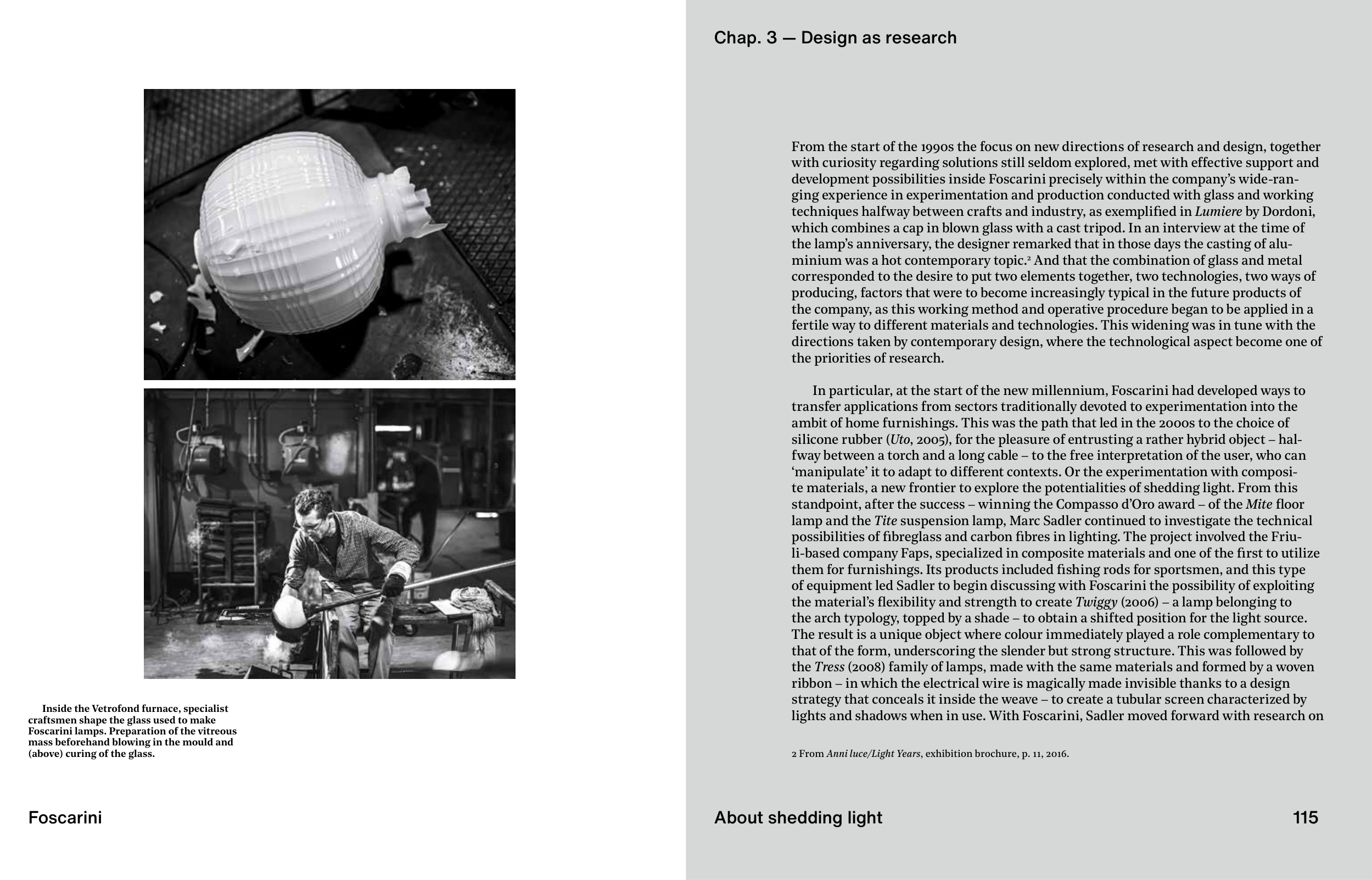Foscarini
115
Inside the Vetrofond furnace, specialist
craftsmen shape the glass used to make
Foscarini lamps. Preparation of the vitreous
mass beforehand blowing in the mould and
(above) curing of the glass.
About shedding light
Chap. 3 — Design as research
From the start of the 1990s the focus on new directions of research and design, together
with curiosity regarding solutions still seldom explored, met with effective support and
development possibilities inside Foscarini precisely within the company’s wide-ran-
ging experience in experimentation and production conducted with glass and working
techniques halfway between crafts and industry, as exemplifi ed in Lumiere by Dordoni,
which combines a cap in blown glass with a cast tripod. In an interview at the time of
the lamp’s anniversary, the designer remarked that in those days the casting of alu-
minium was a hot contemporary topic.2 And that the combination of glass and metal
corresponded to the desire to put two elements together, two technologies, two ways of
producing, factors that were to become increasingly typical in the future products of
the company, as this working method and operative procedure began to be applied in a
fertile way to different materials and technologies. This widening was in tune with the
directions taken by contemporary design, where the technological aspect become one of
the priorities of research.
In particular, at the start of the new millennium, Foscarini had developed ways to
transfer applications from sectors traditionally devoted to experimentation into the
ambit of home furnishings. This was the path that led in the 2000s to the choice of
silicone rubber (Uto, 2005), for the pleasure of entrusting a rather hybrid object – hal-
fway between a torch and a long cable – to the free interpretation of the user, who can
‘manipulate’ it to adapt to different contexts. Or the experimentation with composi-
te materials, a new frontier to explore the potentialities of shedding light. From this
standpoint, after the success – winning the Compasso d’Oro award – of the Mite fl oor
lamp and the Tite suspension lamp, Marc Sadler continued to investigate the technical
possibilities of fi breglass and carbon fi bres in lighting. The project involved the Friu-
li-based company Faps, specialized in composite materials and one of the fi rst to utilize
them for furnishings. Its products included fi shing rods for sportsmen, and this type
of equipment led Sadler to begin discussing with Foscarini the possibility of exploiting
the material’s fl exibility and strength to create Twiggy (2006) – a lamp belonging to
the arch typology, topped by a shade – to obtain a shifted position for the light source.
The result is a unique object where colour immediately played a role complementary to
that of the form, underscoring the slender but strong structure. This was followed by
the Tress (2008) family of lamps, made with the same materials and formed by a woven
ribbon – in which the electrical wire is magically made invisible thanks to a design
strategy that conceals it inside the weave – to create a tubular screen characterized by
lights and shadows when in use. With Foscarini, Sadler moved forward with research on
2 From Anni luce/Light Years, exhibition brochure, p. 11, 2016.
115


